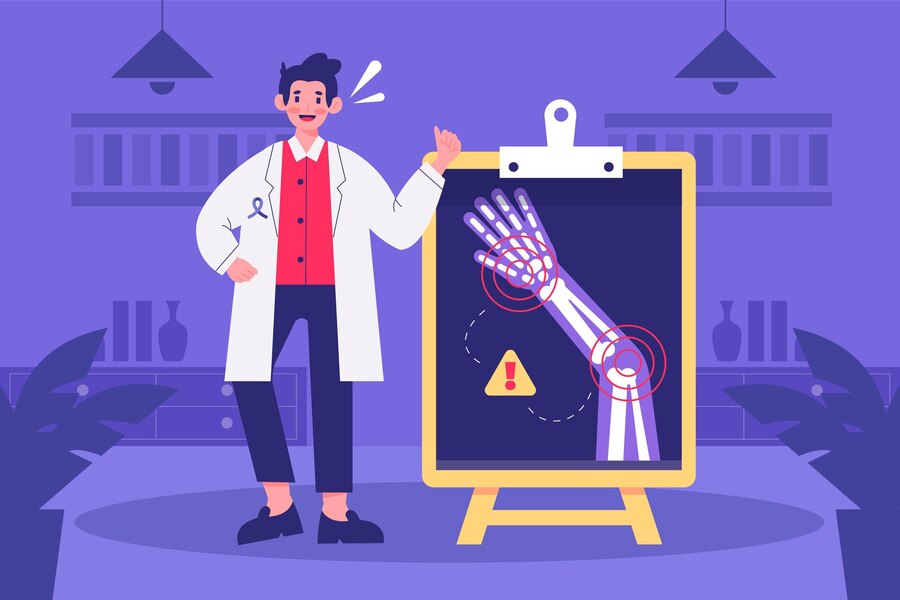Regenerative medicine is transforming orthopedic care by providing new approaches to treat injuries and degenerative conditions. This branch of medicine focuses on repairing and regenerating damaged tissues, offering hope for patients with conditions that were once considered untreatable. By leveraging the body's natural healing processes, regenerative medicine aims to restore function and alleviate pain in orthopedic patients.
Key Advancements in Regenerative Medicine
-
Stem Cell Therapy:
-
Mesenchymal Stem Cells (MSCs):
MSCs are multipotent stem cells that can differentiate into various cell types, including bone, cartilage, and muscle cells. They are commonly derived from bone marrow, adipose tissue, and umbilical cord blood. MSCs have shown promise in treating conditions such as osteoarthritis, tendon injuries, and fractures.-
Example: MSCs can be injected into the affected joint or tissue to promote cartilage regeneration in osteoarthritis patients.
-
Induced Pluripotent Stem Cells (iPSCs):
iPSCs are reprogrammed adult cells that can differentiate into any cell type. They offer a potential source of patient-specific stem cells for personalized treatments.-
Example: iPSCs can be used to generate cartilage cells for repairing damaged joints.
-
-
Tissue Engineering:
-
Scaffold-Based Approaches:
Tissue engineering involves creating scaffolds that provide a structure for cells to grow and form new tissue. These scaffolds can be made from natural or synthetic materials and are often combined with growth factors to enhance tissue regeneration.-
Example: Scaffolds made from collagen or hyaluronic acid can be used to support the growth of new cartilage in joint repair.
-
Bioprinting:
Bioprinting uses 3D printing technology to create complex tissue structures by layering cells and biomaterials. This approach can produce customized implants and tissue grafts for orthopedic applications.-
Example: Bioprinted cartilage can be used to repair joint defects or injuries.
-
-
Biomaterials:
-
Hydrogels:
Hydrogels are water-based materials that can mimic the extracellular matrix of tissues. They can be used to deliver cells and growth factors to the injury site, promoting tissue regeneration.-
Example: Injectable hydrogels loaded with stem cells can be used to repair cartilage and tendon injuries.
-
Nanomaterials:
Nanomaterials, such as nanoparticles and nanofibers, can enhance the delivery of therapeutic agents and provide structural support for tissue regeneration.-
Example: Nanoparticles can be used to deliver anti-inflammatory drugs to the injury site, reducing pain and promoting healing.
-
Applications in Orthopedic Conditions
-
Osteoarthritis:
-
Stem cell therapy and tissue engineering offer promising treatments for osteoarthritis by promoting cartilage regeneration and reducing inflammation. These therapies can potentially delay or eliminate the need for joint replacement surgery.
-
-
Tendon and Ligament Injuries:
-
Regenerative medicine approaches, such as MSC injections and scaffold-based tissue engineering, can enhance the healing of tendon and ligament injuries, improving recovery times and reducing the risk of re-injury.
-
-
Bone Fractures:
-
Stem cell therapy and biomaterials can accelerate bone healing and improve the integration of bone grafts. Bioprinted bone constructs offer the potential for custom-made implants tailored to the patient's anatomy.
-
-
Spinal Disc Degeneration:
-
Regenerative therapies, including MSC injections and tissue-engineered scaffolds, can promote the regeneration of intervertebral discs, alleviating pain and restoring function in patients with degenerative disc disease.
-
Challenges and Future Directions
-
Clinical Translation:
-
While regenerative medicine holds great promise, translating these therapies from the laboratory to clinical practice remains challenging. Rigorous clinical trials are needed to ensure the safety and efficacy of these treatments.
-
-
Regulatory Hurdles:
-
Regulatory approval for regenerative therapies can be complex and time-consuming. Establishing standardized protocols and regulatory frameworks is essential for advancing these treatments.
-
-
Cost and Accessibility:
-
The high cost of regenerative therapies can limit accessibility for many patients. Efforts to reduce costs and improve insurance coverage are necessary to make these treatments widely available.
-
-
Personalized Medicine:
-
Advances in genomics and personalized medicine can enhance the effectiveness of regenerative therapies. Tailoring treatments to the individual patient's genetic and molecular profile can optimize outcomes and reduce the risk of adverse effects.
-




